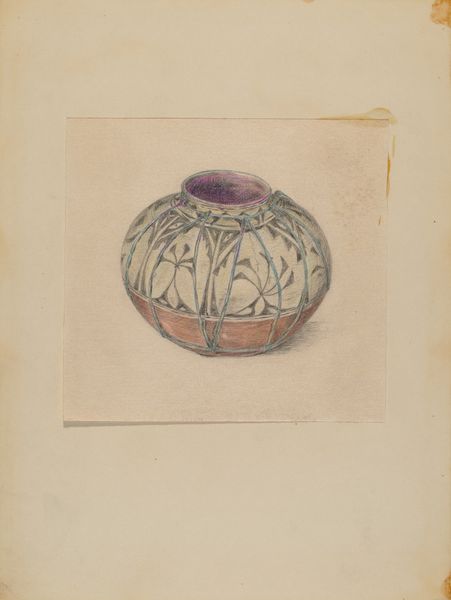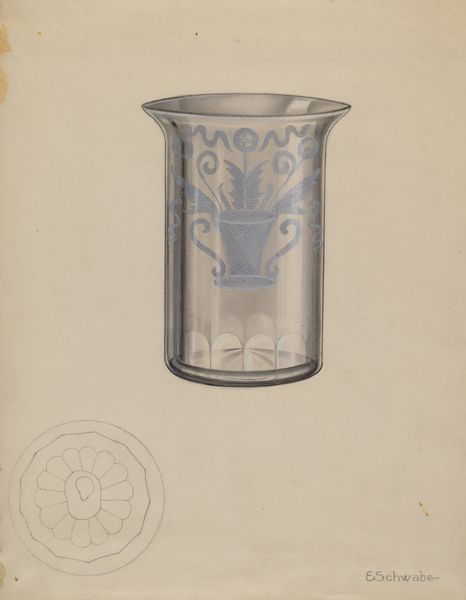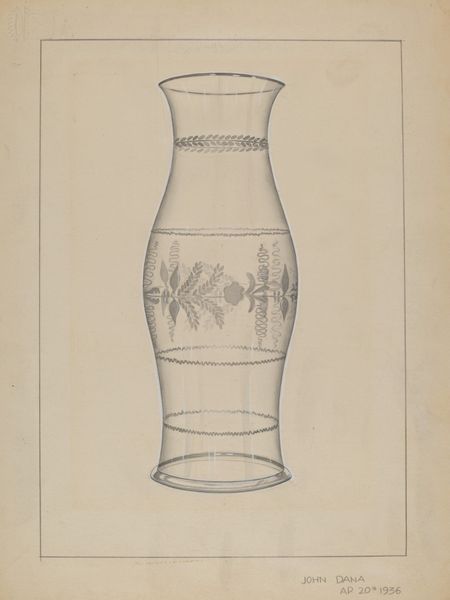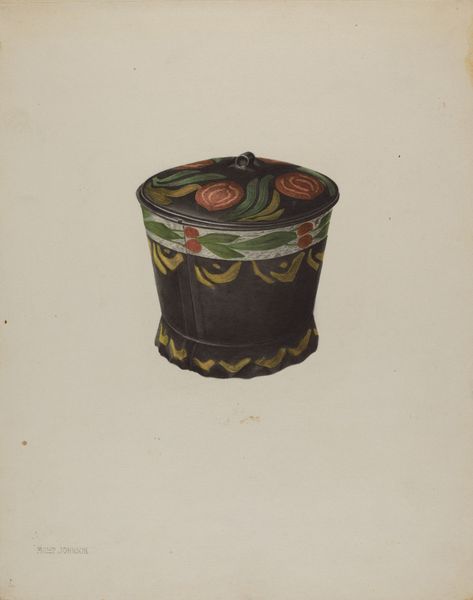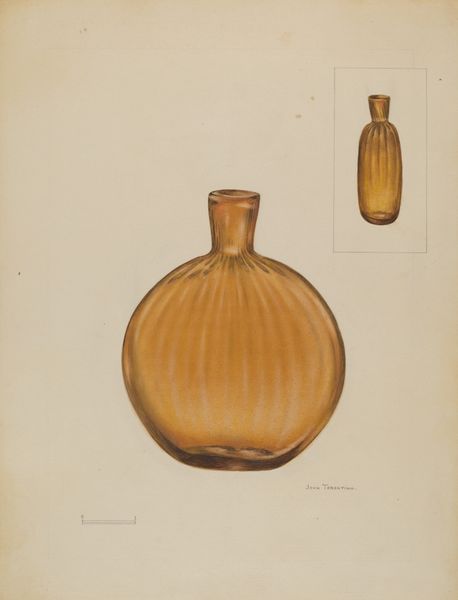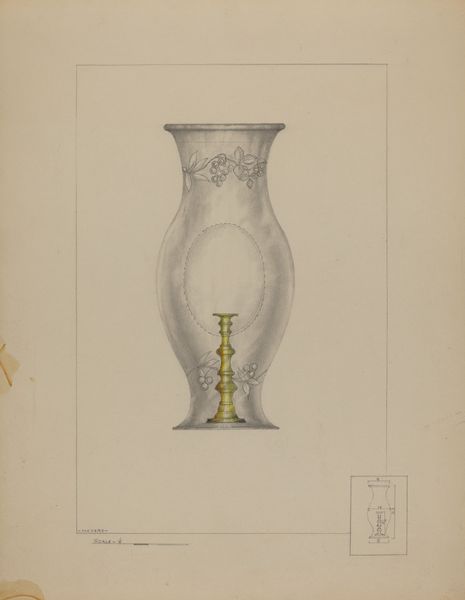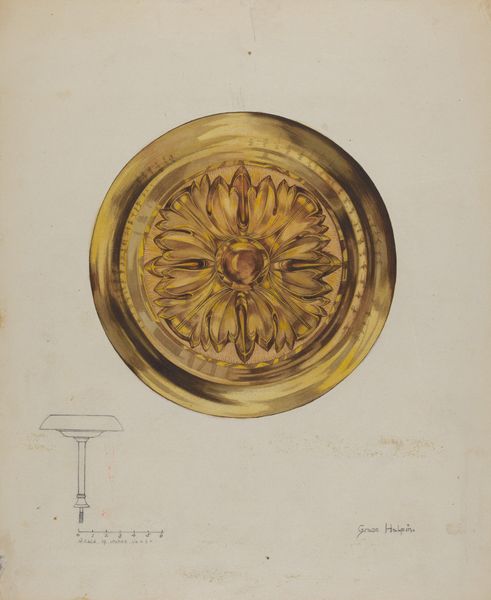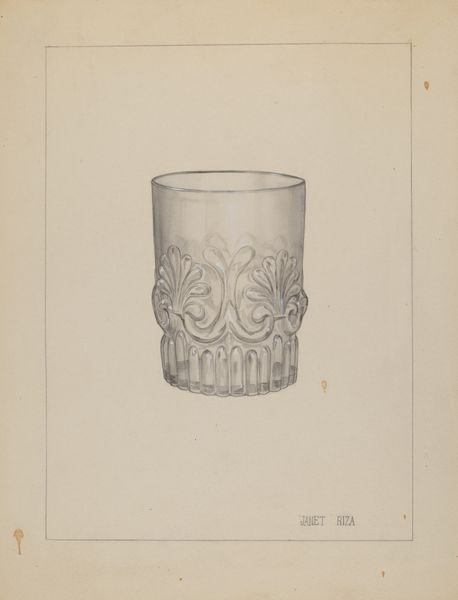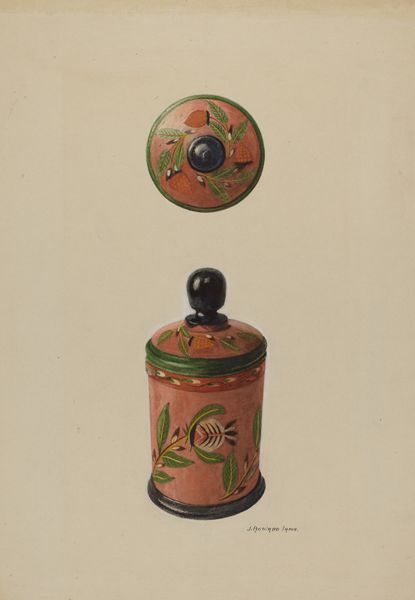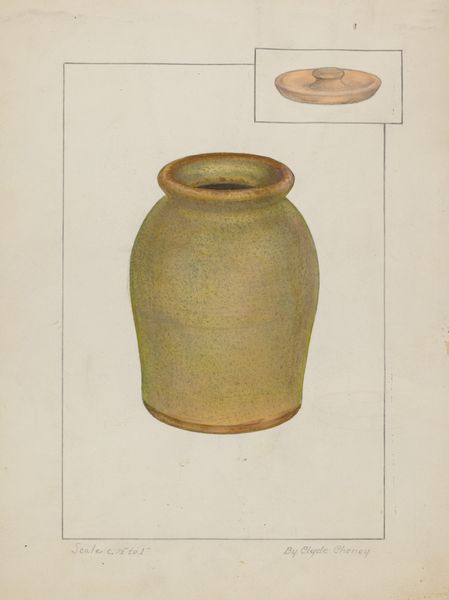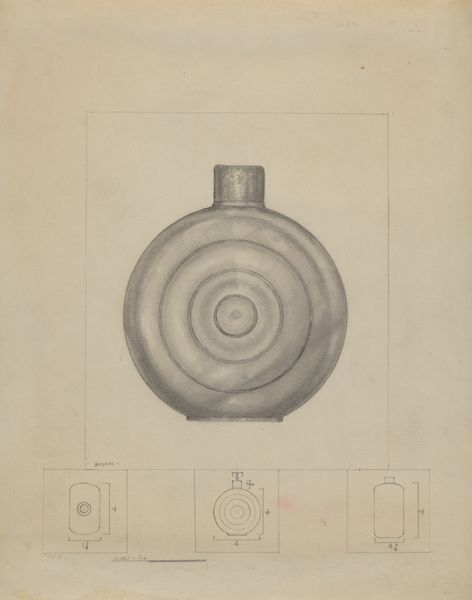
drawing, acrylic-paint, watercolor
#
drawing
#
acrylic-paint
#
watercolor
#
pencil drawing
#
coloured pencil
#
watercolour illustration
#
watercolor
Dimensions: overall: 28.1 x 22.7 cm (11 1/16 x 8 15/16 in.) Original IAD Object: 3 3/8" wide; 5 1/4" high; 2 5/8" deep
Copyright: National Gallery of Art: CC0 1.0
Curator: Let’s discuss this striking piece. What do you see, immediately? Editor: I'm drawn to the colors, mostly: the dark backdrop allows the other, brighter shades to truly pop. It evokes a sense of folk art meets something more stylized. Curator: Exactly. This is a preparatory drawing, likely from between 1935 and 1942, showing designs for a “Toleware Tea Caddy.” We believe Janet Riza created this, using drawing and paint mediums. Look at the detailed watercolor and pencil rendering. It is quite intriguing. Editor: "Preparatory drawing" speaks to the functionality intended. But who was the design for, and how does it speak to that era? Because tea was a commonplace staple, it had implications in rituals of class. It hints at leisure, at specific forms of socializing, which would appeal to consumers, of course. Curator: Absolutely. We can situate toleware as objects that frequently democratized forms and motifs, because, during the Depression era, accessibility and affordability mattered greatly. The visual of stylized painting was popularized when art shifted focus from exclusive tastes of high society, but that doesn't mean that people of the time accepted new waves of popular art right away. Editor: It's fascinating how utilitarian objects, like a tea caddy, could become vehicles for broader social and political dialogues. Curator: And this piece encapsulates it perfectly. Beyond its aesthetic appeal, it prompts us to think about accessibility and the power dynamics embedded within seemingly simple objects. What might these artistic approaches, which are a kind of mimicry, mean within design theory? Is it just to be "consumed," or does this act of art create a deeper, shared experience for communities of all kinds? Editor: A question worth pondering indeed, particularly in our hyper-commodified world today.
Comments
No comments
Be the first to comment and join the conversation on the ultimate creative platform.
